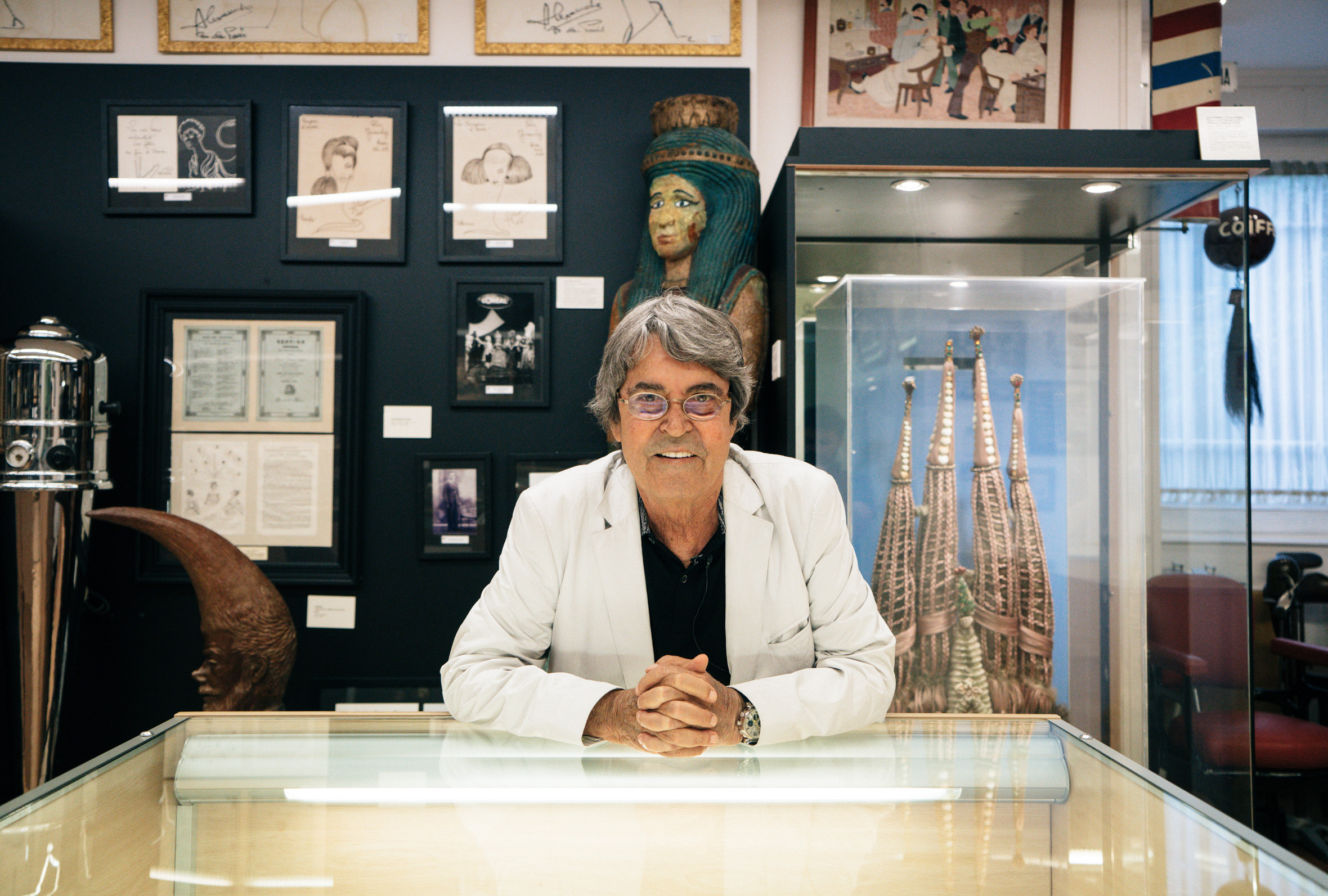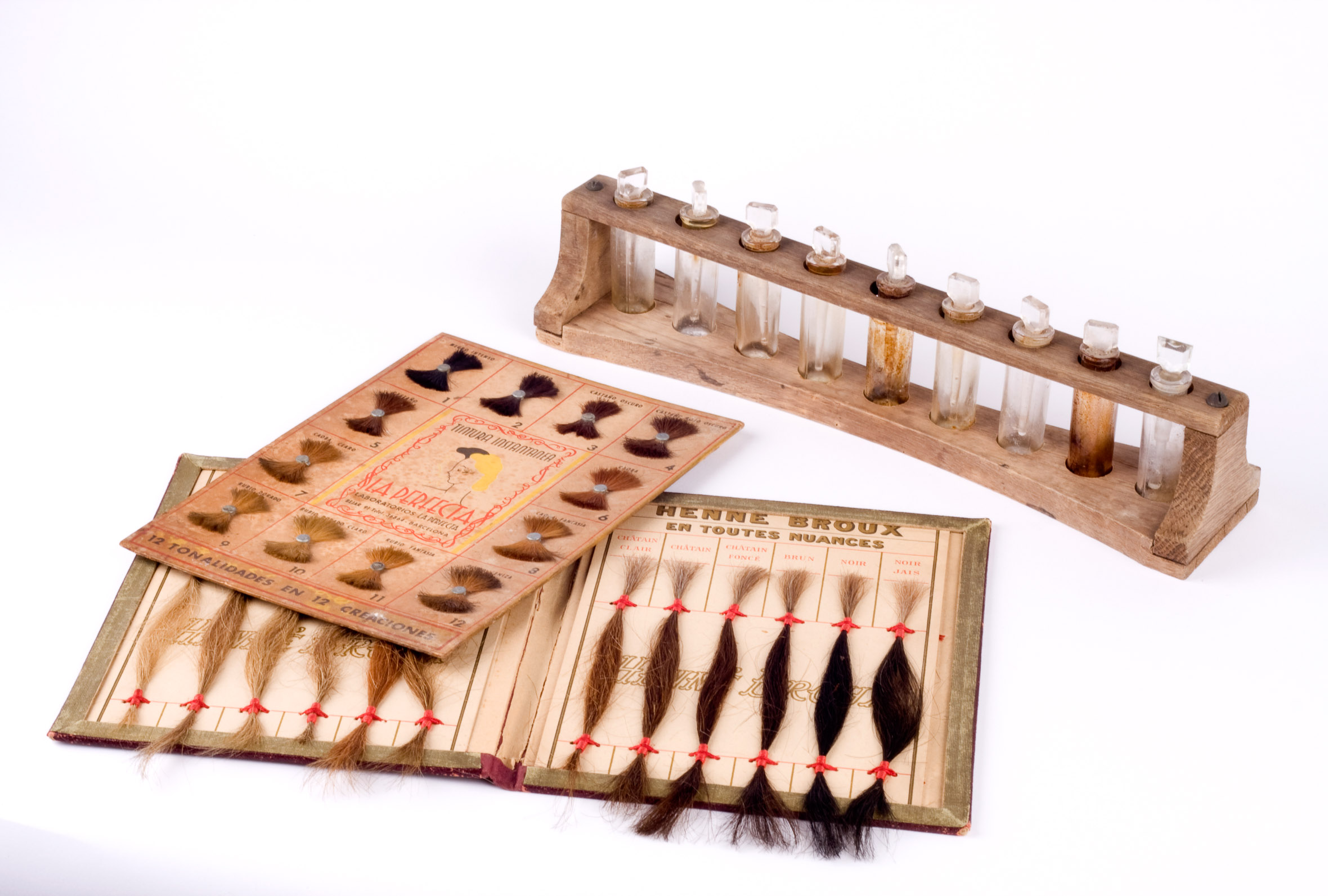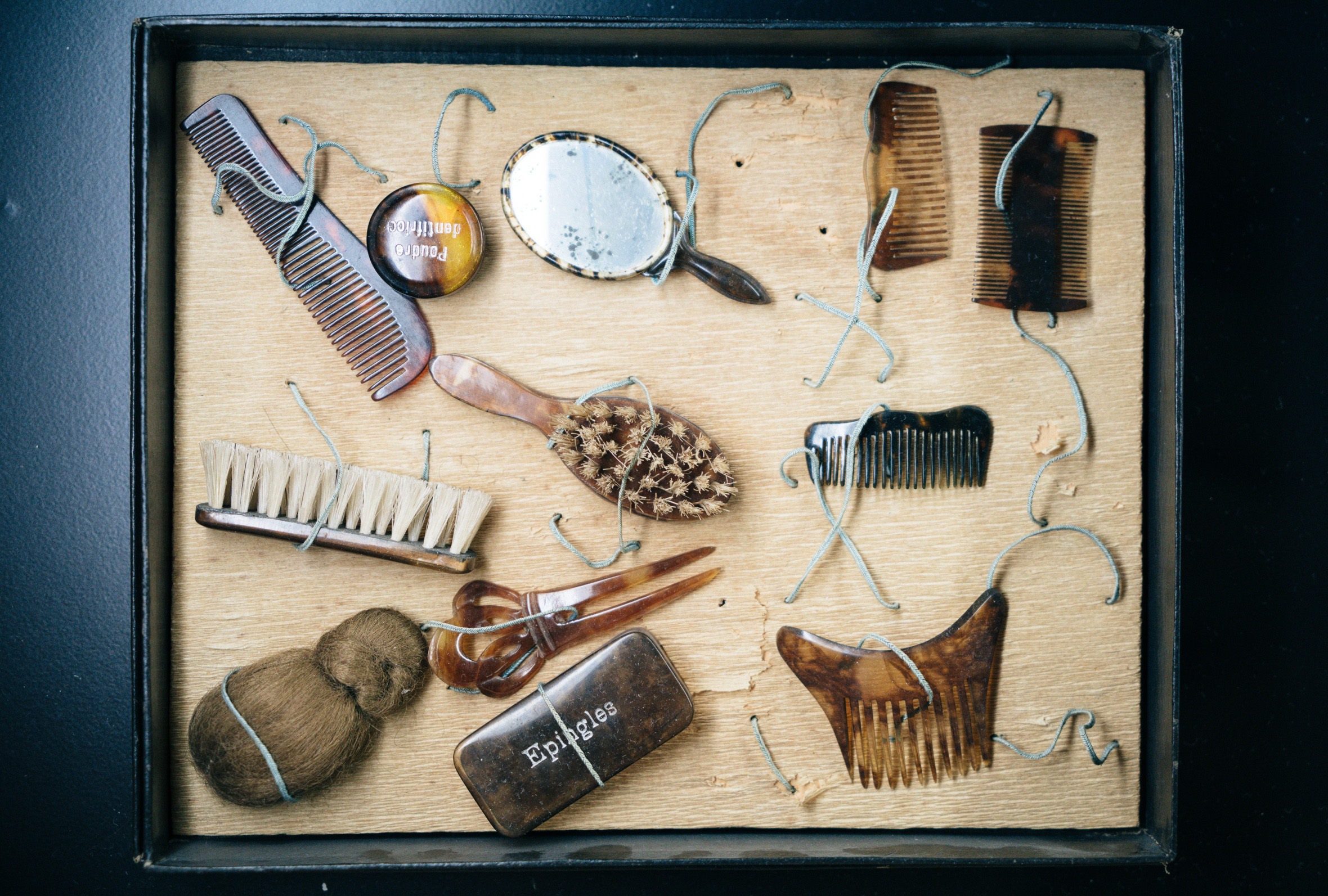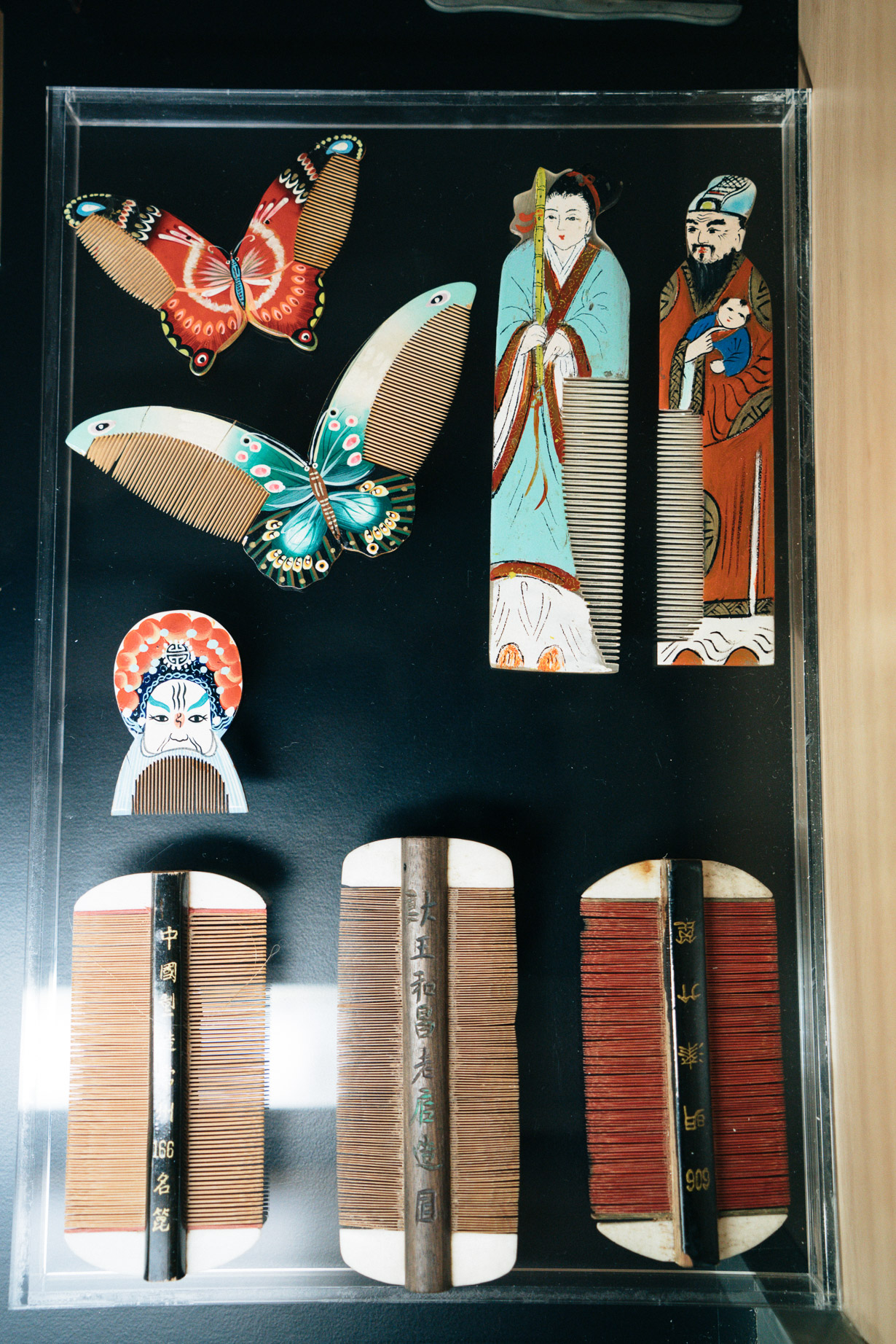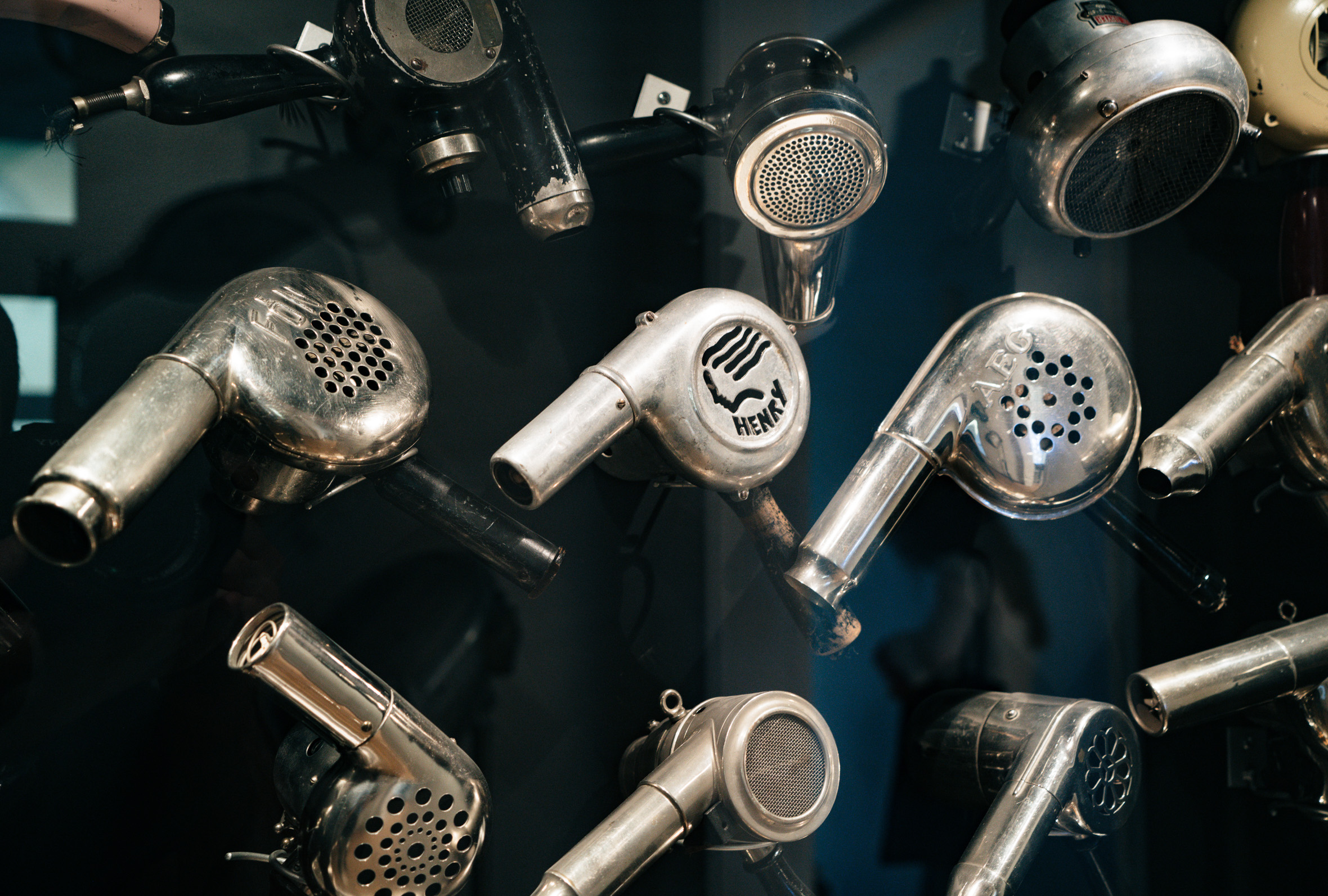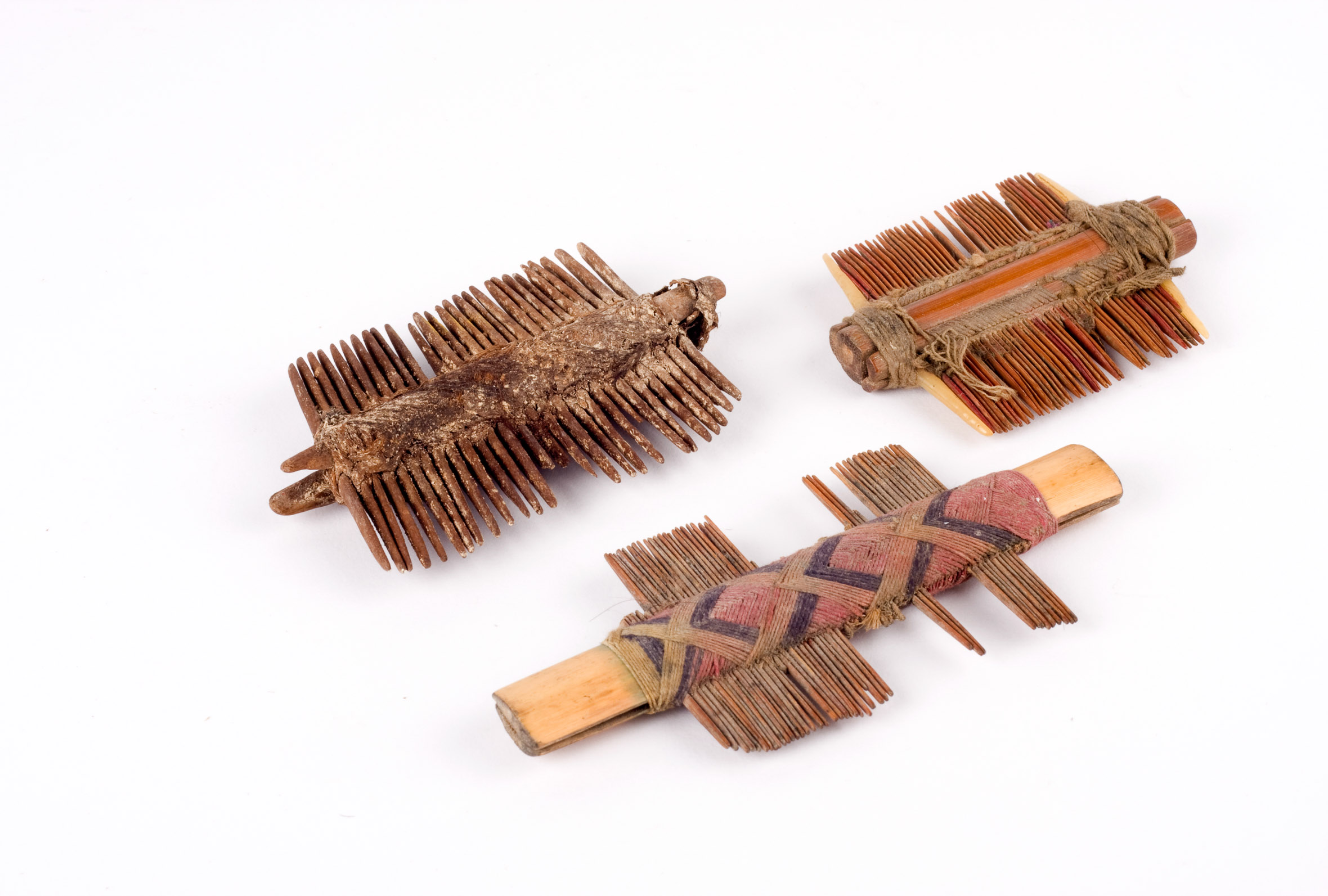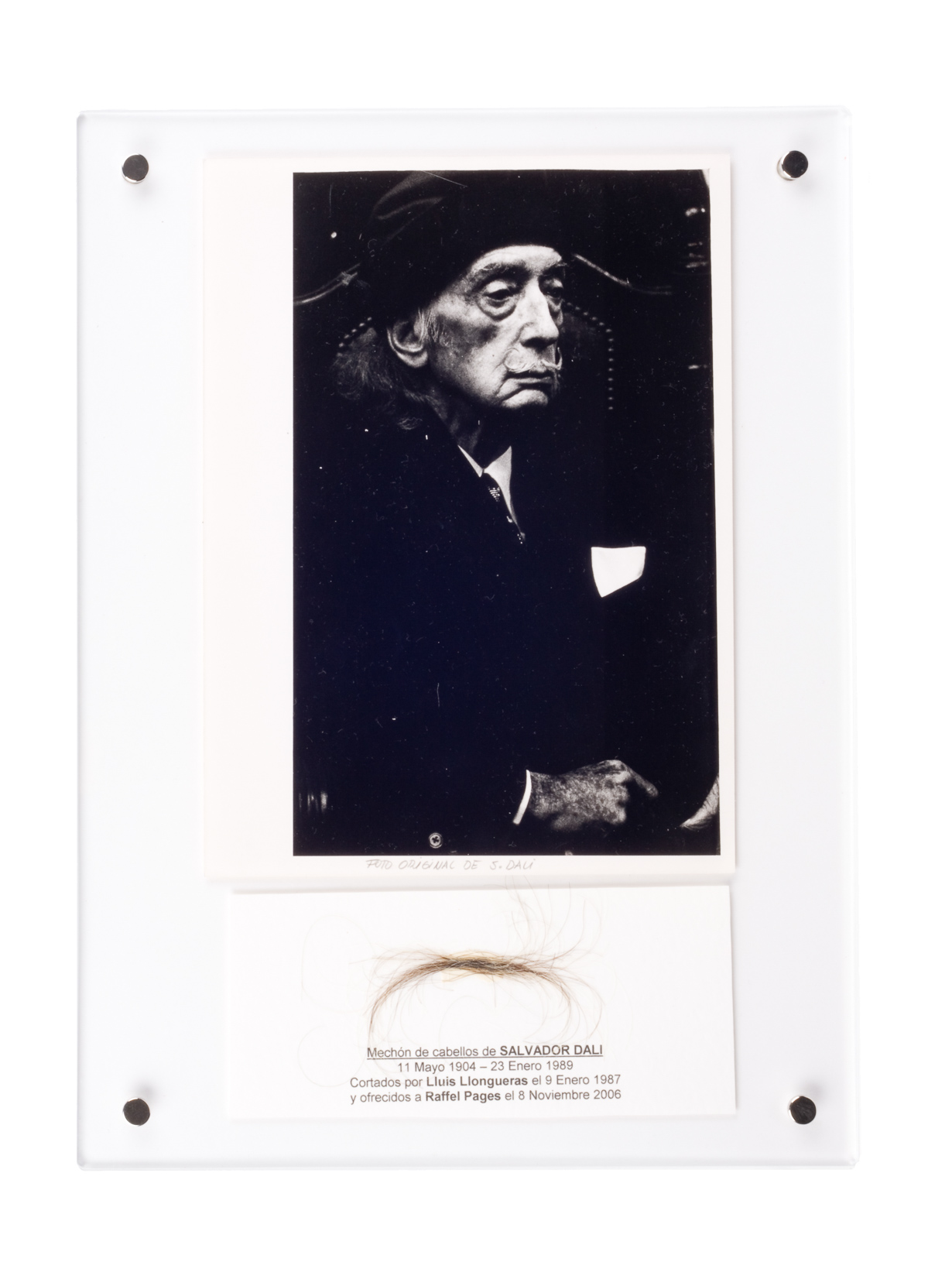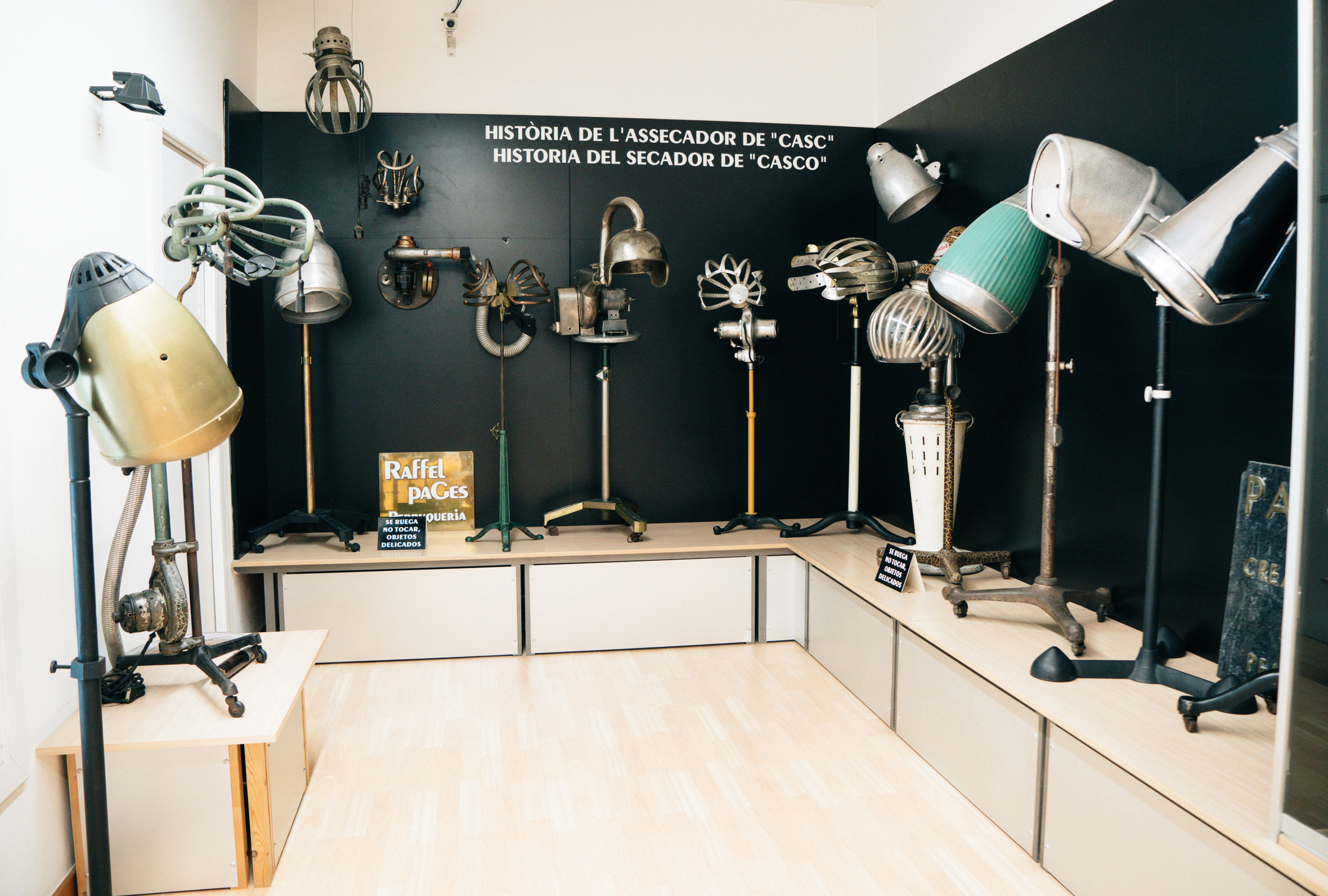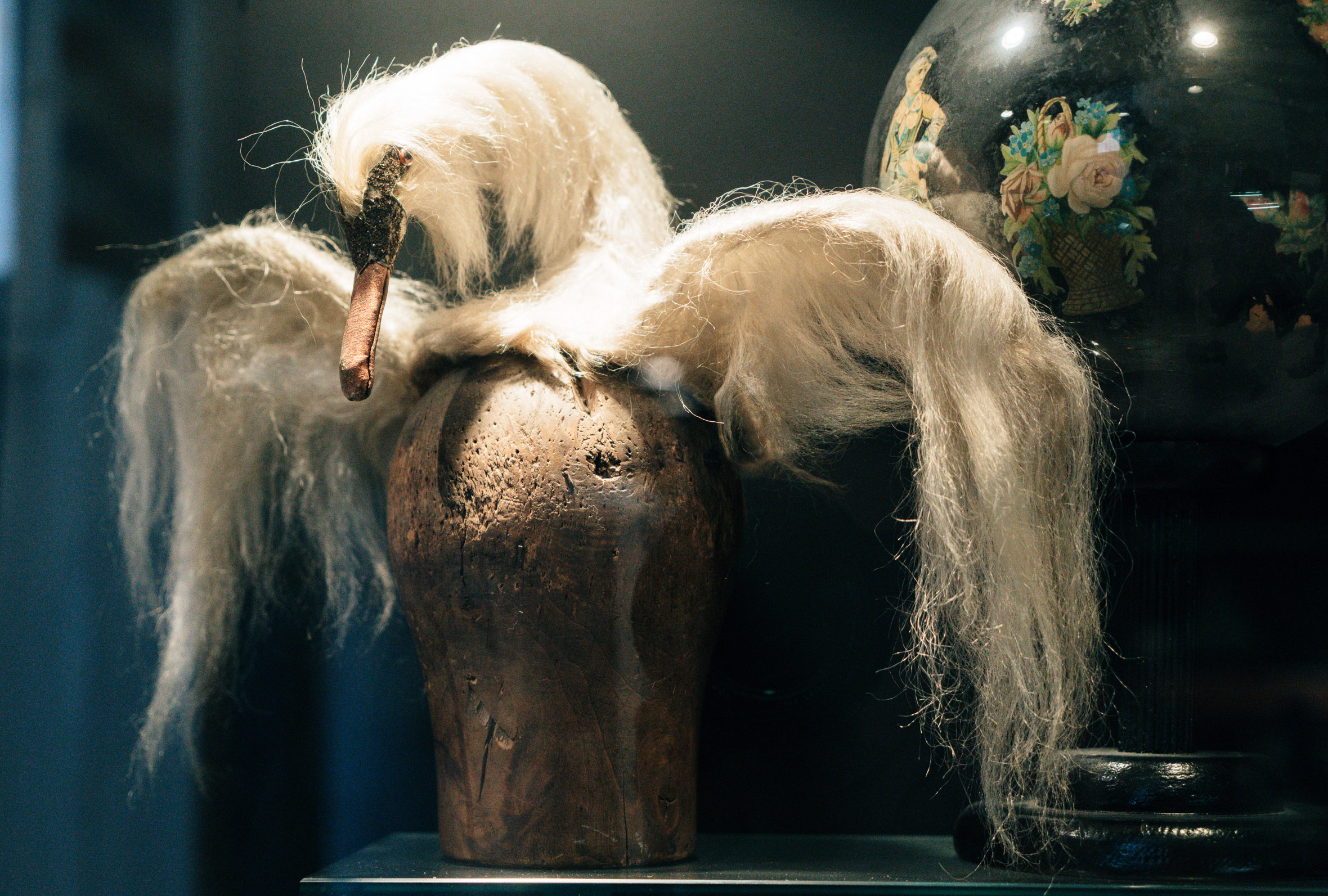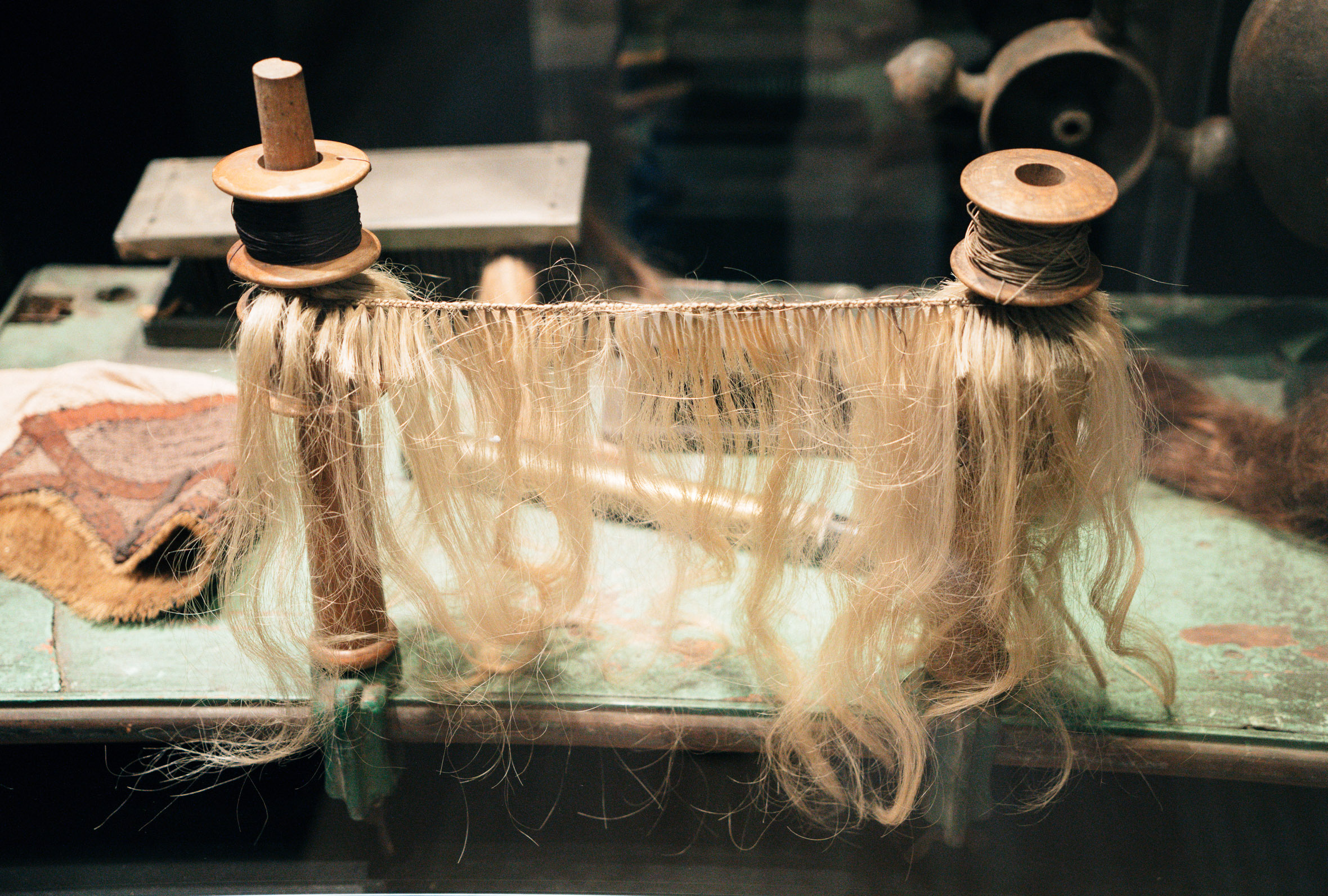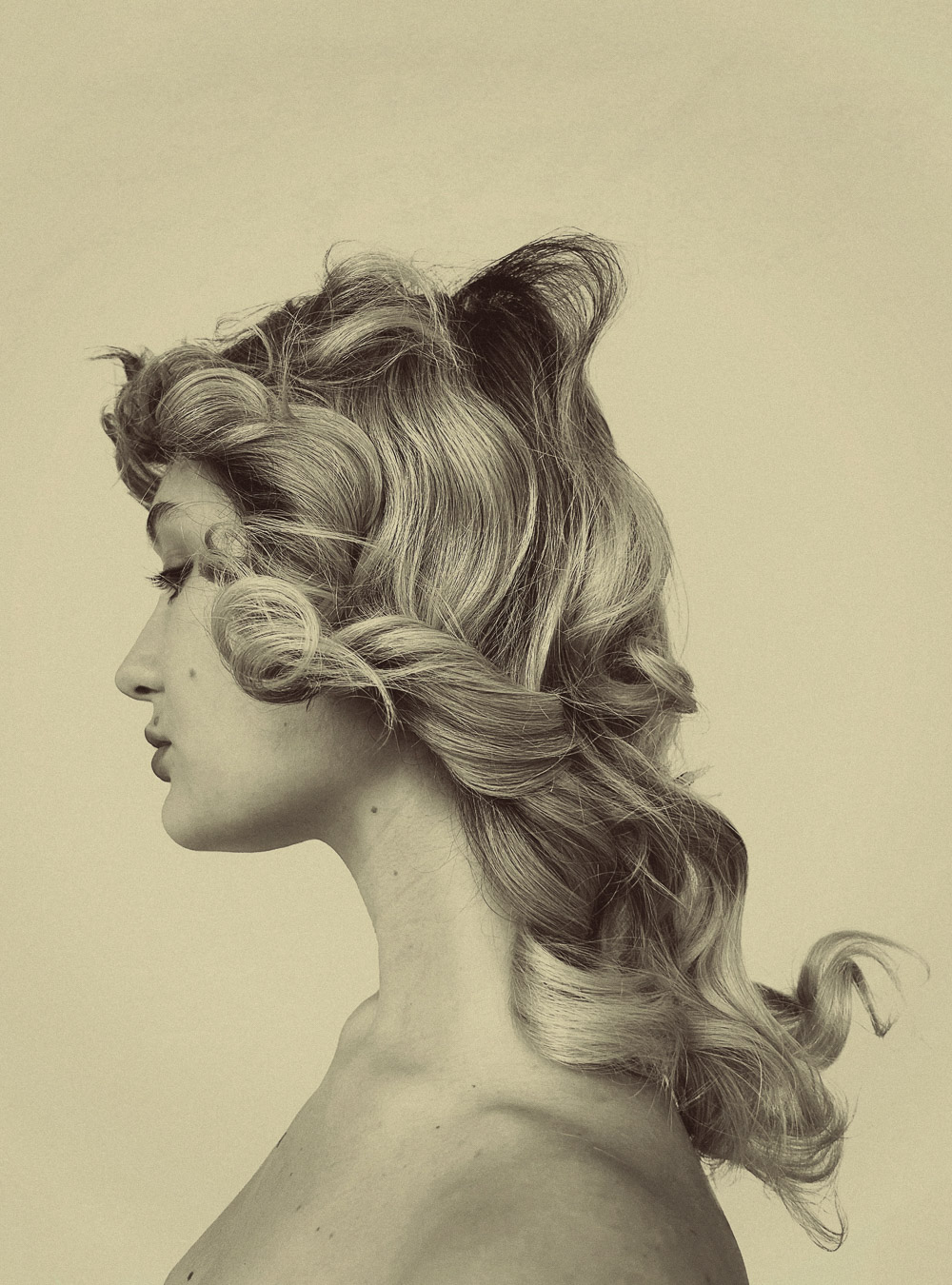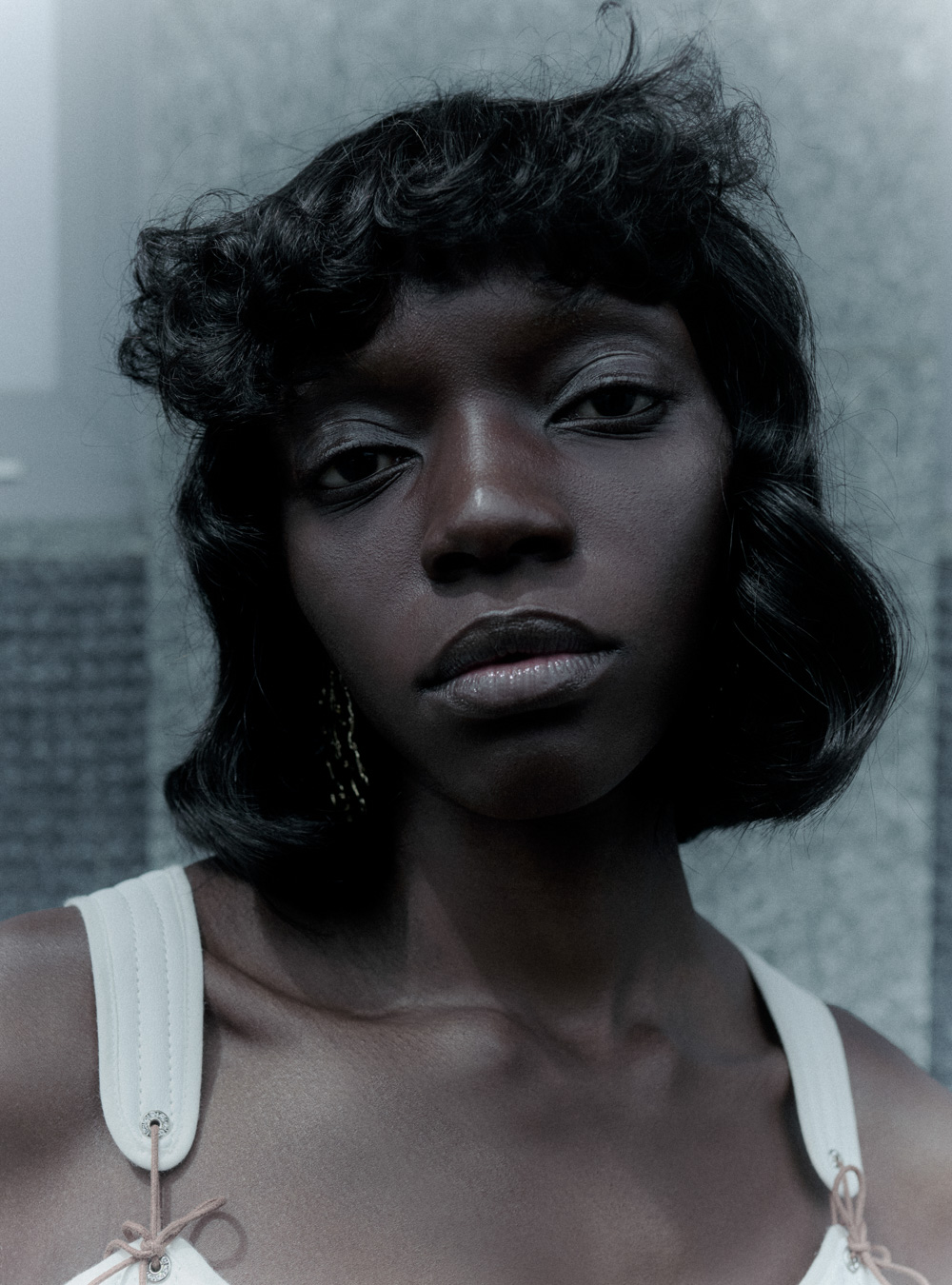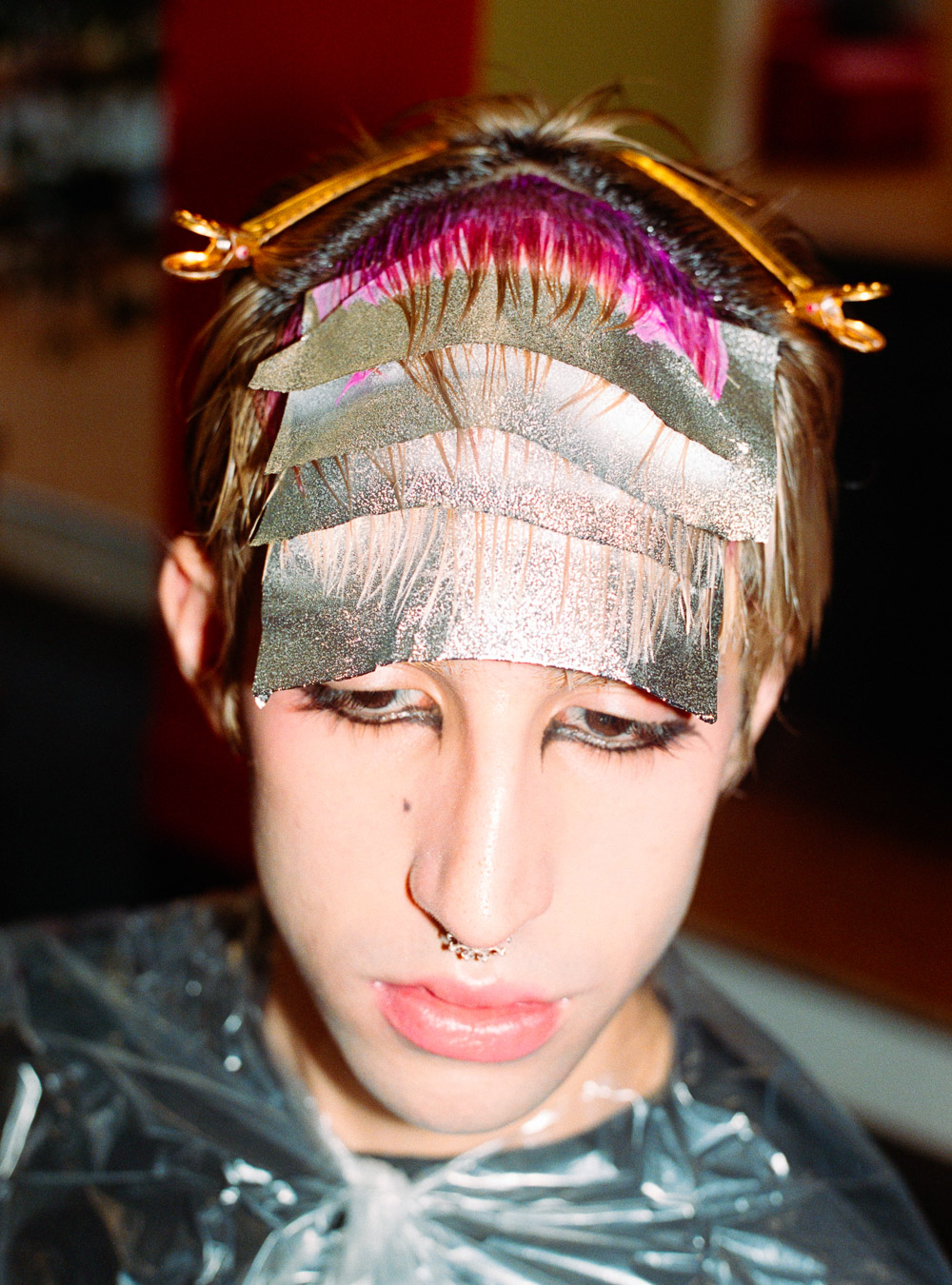- Raffel Pages Museum
- Raffel Pages Museum
- Raffel Pages Museum
PLACES: From a lock of Napoleon’s hair to medieval hair combs, the collection contains over 14,000 fascinating objects from the world of hair
Images: Panos Damaskinidis
Interview: Antonio Celotto
Special Thanks: Raffel Pages
Based in central Barcelona, The Raffel Pages Museum of Hairdressing offers a fascinating look at the history of the hairdressing industry. Consisting of thousands of objects including hairdressing tools, artworks, books and other quirky oddities, the museum is the result of almost 60 years of tireless collecting by the hairdresser Raffel Pages.
The son of hairdressers, Pages spent his teenage years at Paris’s iconic Carita salon before returning to Barcelona to work at the family salon. His interest in collecting began when Pages’ father was refurbishing the salon. “He was throwing away perming machines, hairdryers and other very old objects,” he recalls, “I told him I would keep them for nostalgia purposes, as I had been around them my whole life. That was the very beginning of my collection in 1960 – 58 years ago!”
Pages, whose salon group of over 100 salons is among Spain’s most influential, opened his first salon in 1975. Alongside this, he continued scouring antique markets and auctions all over the world in pursuit of weird and wonderful hair objects. What started as a personal collection quickly grew into something bigger, as Pages began to recognise the value of documenting the history of the industry, revealing it to be a rich and multifaceted world.
Many of the items are of anthropological value, charting the evolution of the trade through the changing instruments, techniques and trends. Other objects add pop culture appeal, such as locks of hair from Napoleon Bonaparte, Marie Antoinette and Salvador Dalí. Even though the museum is bursting with objects, the items on display account for just 5% of the full collection. A staggering 14,000 objects in total, the rest is archived at Pages’ headquarters. “I love this collection madly,” Pages has previously said, “I wish that future generations of this artisan trade might one day know their true history through the instruments, products, equipment and books that a ‘coiffeur fou de Barcelone’ (mad hairdresser from Barcelona) collected for many years”.
Did you always want to be a hairdresser? No, but my father made me work in his salon in Barcelona. Luckily, I was good and I began to make a name for myself in Barcelona when I was still a kid. Rosy and Maria Carita (owners of Carita Salon in Paris) became aware of me and sent me a letter saying that they would like for me to come and work at Carita. At the time it the best hairdressing salon in the world, without question. Alexandre, Jean-Louis David and Dessange all came from Carita. I fell in love with the type of hairdressing they offered, which didn’t exist here in Spain. It was very sophisticated, striving for perfection. I became enthralled with the idea of hairdressing at Carita. In the 60s and 70s, Paris was creative and bohemian, brimming with students, culture and art. It was a time of brutal cultural change.
What inspired you to turn your personal collection into a museum? The museum is about giving a profession – which does not emphasise its past – a history. The hairdressing industry used to be considered a profession with very little culture and when I started the museum, I began to explore this. I almost became an anthropologist of hair. I met thousands of hairdressers throughout France, Spain, England, Italy and Germany who had been doing a great job for 30 – 40 years. I studied the why, what they achieved, what they did, thought and wrote. There isn’t a single renowned hairdresser who doesn’t have other curiosities, because there’s a point when the hairdressing alone can become monotonous. Since the 17th century, there are hairdressers who have also been writers, poets and artists. Some hairdressers have even designed cars and planes, like Antoine, or Alexandre who would sketch all of his hairstyles before creating them.
Is this because once you’ve mastered all the techniques, you can’t evolve any further? I think the problem is always culture. If there’s no culture, it’s difficult to go one step forward. There have been great hairdressers throughout history who have mastered all the hairdressing techniques, but may not have been able to draw, paint or write what they had done. This ultimately transforms you into something different than a hairdresser, like Llongueras. Antoine, Alexandre, Vidal Sassoon – they have all gone one step further. Hairdressing has been the seed for other things to grow.
Which items in the museum mean the most to you? My favourite items are sketches done by Alexandre de Paris for Givenchy, Chanel and Balenciaga. The ones that mean the most to me are those from Carita, because Rosy Carita was my muse and my fairy godmother. Without her I wouldn’t be a hairdresser. Also, my father’s first hairdryer. It’s from 1942, the year I was born. And it still works!
Which object in your collection was the most difficult to obtain? Marie Antoinette and Louis XVI’s hair. It was at an auction and I couldn’t bid because the asking price was an absolute fortune. After the auction I wrote to them, telling them about the museum, and that I would love to have the hair but I couldn’t afford the €100,000 they were hoping for. They asked me how much I could pay – they were descendants from the French monarchy – and I told them up to €7,000. I told them that I wasn’t buying to sell, that the hair would be displayed and become part of history. About two weeks later, the owner called me and said they had decided they wanted it to go to the museum. It was truly a gift!
Did you have a passion for history before hairdressing? No, not particularly, but after I specialised in hairdressing I became a lot more interested. You have to study! There are hairdressers that people may not know about, who I have studied in immense detail. It may not have much meaning for general human history but it does for hairdressing and fashion history.
What do you envisage for the future of the museum? I would like to see all the pieces displayed together at once. There are 14,000 in total!
The Raffel Pages Museum of Hairdressing is at Rambla de Cataluña 99, 08008 Barcelona, Spain.
- ANTHROPOLOGY OF HAIR
- ANTHROPOLOGY OF HAIR
- ANTHROPOLOGY OF HAIR
- ANTHROPOLOGY OF HAIR
- ANTHROPOLOGY OF HAIR
